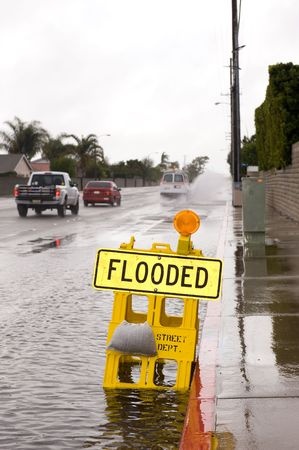

How do Poor Weather Conditions Impact Car Accidents?
How do poor weather conditions affect car accidents on roadways? Poor weather can create visibility impairments and affect vehicle performance through lost traction, stability and maneuverability. It may also create road hazards that can delay travel, close roads, and increase the risk of car accidents.
Poor Weather Conditions have an impact on road safety
On average, there are more than 5,760,000 car crashes in the United States every year. About 22 percent of car accidents (about 1,259,000) are considered weather-related.
Weather-related car accidents defined: car crashes that occur in adverse weather conditions including rain, sleet, snow, fog, severe crosswinds, or blowing snow/sand/debris; on slick pavement such as wet, snowy/slushy, or icy.
Weather-Related Car Crash Statistics
According to NHTSA data, between 2004 and 2013, 16 percent of fatal crashes and 19 percent of injury crashes occur during bad weather conditions. These crashes account for almost 5,300 deaths and more than 315,000 injuries each year.
- The vast majority (73 percent) of weather-related crashes occur on wet pavement, 46 percent of these during the actual rainfall.
- 17 percent of weather-related crashes occur while it is snowing or sleeting.
- 13 percent of weather-related crashes occur on icy pavement.
- 14 percent of weather-related crashes occur on snowy or slushy pavement.
- 3 percent of weather-related crashes occur during the presence of fog.
Weather Impacts on Roads
- Some roads or lanes may become inaccessible if they are submerged from flooding, snow accumulation, or wind-blown branches and other debris.
- High winds may knock out power and disrupt traffic signals or blow debris onto the roadway.
- Recommended speed limits / the safe driving speed may be reduced on roads with poor driving conditions due to flooding (down 10 to 25 percent) or snow/slush (down by 15 to 30 percent).
- Light rain or snow may reduce safe speeds by 3 to 13 percent.
- Heavy rain can reduce safe speeds by 3 to 16 percent.
- Heavy snowfall may reduce safe speeds by 5 to 40 percent.
- Low visibility from weather such as fog can cause the need for speed reductions of 10 to 12 percent.
- Overall travel times may be increased by 11 to 50 percent depending on the severity of the weather conditions. If you are setting out in inclement weather or on roads that have been affected by inclement weather, allow extra time to reach your destination, drive defensively, and slow down as needed.
How Weather Impacts Productivity
Winter road maintenance accounts for approximately 20 percent of state Department of Transportation (DOT) maintenance budgets. Each year, state and local agencies spend more than 2.3 billion dollars on snow and ice control operations. Extra strong winter conditions can increase operating and maintenance costs for many agencies including law enforcement and emergency management.
Trucking companies and commercial vehicle operators (CVO) lose an estimated 32.6 billion vehicle hours due to weather-related congestion annually. In the 20 American cities with the most truck traffic, almost 12 percent of total estimated truck delay is due to poor weather. These weather-related delays cost trucking companies and CVOs an estimated 2.2 billion dollars to 3.5 billion dollars annually.
If you or a loved one were injured in an accident, you have enough to deal with. Let an experienced accident attorney fight for the full compensation that you deserve. It is not uncommon to receive a settlement from the insurance company that is five to ten times bigger with the help of a lawyer. Call the caring accident attorneys at Tario & Associates, P.S. in Bellingham, WA today for a FREE consultation! We have been representing residents of Whatcom County, Skagit County, Island County and Snohomish County since 1979. You will pay nothing up front and no attorney fees at all unless we recover damages for you!




